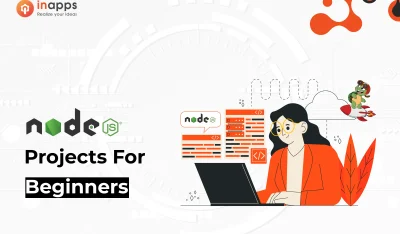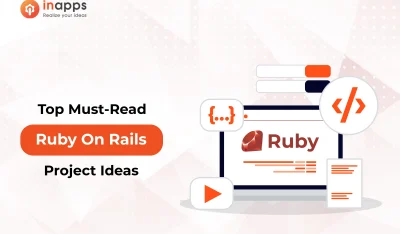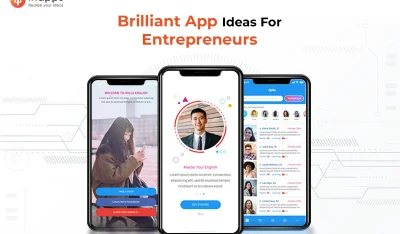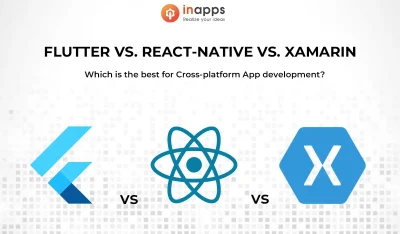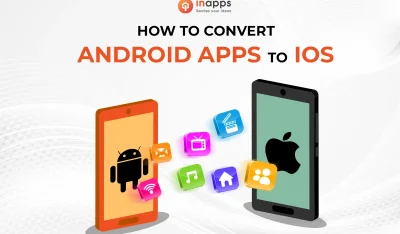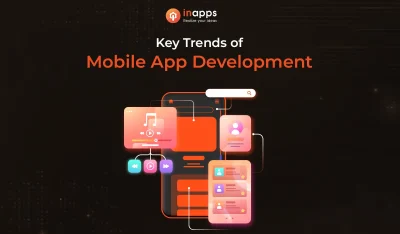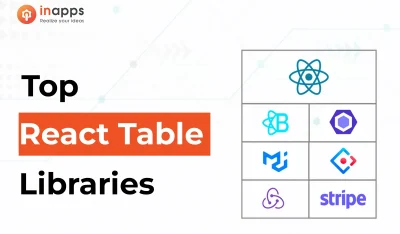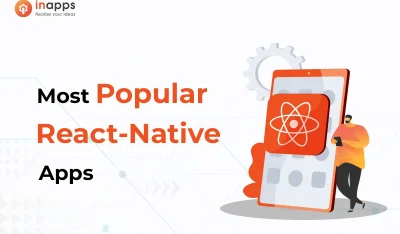- Home
- >
- Mobile apps development
- >
- How To Create A Design Proposal According To User Needs – 2022
Few activities are as thrilling as the possibility of a brand new design for projects. It all comes down to how you write your proposal, whether it’s for branding, illustration, website, or product design project—what you incorporate and even what you leave out will determine whether you stand out or missed something.
Writing a proposal allows you to demonstrate why you or your organization is the best fit for the task that a prospective customer is looking for.
However, you risk losing that customer if you don’t use the correct proposal design, know precisely what your proposal has to say, and include the right proposal graphics.
This is why we’ve compiled a list of beautiful, professional-looking proposal designs for projects to assist you to figure out precisely what to include in your proposal and where it should go in order to attract new customers.
But first…
What Is Design Proposal?
A design proposal is a documentation or a sequence of slides that outline your design for projects strategy. It’s a means for clients to evaluate the value that various designers give them, and it’s usually demanded by them.
Is proposal another name for pitch?
No, proposal is not the same as pitch!
A design proposal should be designed after speaking with your customer over the phone or in person. In order to discover a good fit for their project, clients would generally contact many service providers. As a result, they utilize design proposals to assess the risk of working with a specific vendor.
So a good design proposal sample doesn’t require you to demonstrate your flashy design abilities—or even any design skills at all. However, it should clearly state your client’s problem or goal, how your web design will benefit their organization, and why you are the best candidate for the job.
And, most importantly, you must demonstrate to prospective clients why you are the greatest alternative for their company in terms that they understand. Keep in mind that your client is unlikely to be a designer. It’s for this reason that they’ve come to you.
But it’s also essential to note that design proposals don’t have to be just for the benefit of your client.
They can steer the design process, keep the project requirements in line, and match your and your client’s requirements if you tackle them the correct way. So, whenever you start writing a proposal, ensure you and the client have a constructive discussion about the project’s goals, budget, and scope.
Why Do Client’s Ask For Proposals?
Clients want proposals because there are so many alternatives available to them.
They want to draw comparisons between your work and the options they have, even if you have some particular power or amazing design portfolio. Your design idea should be notified so that people can appreciate its worth.
The best fit, on the other hand, does not always imply the cheapest solution or the most impressive design portfolio.
It implies that you can make a significant impact on them and assist them with a task they require.
You win! – even if you’re a lot more costly – if you can convey deliver the value of your work to them better than others.
So, first, make sure they understand that you CAN perform the job correctly, and then make sure they understand why alternative options are less appealing.
Let’s uncover how to build an effective design proposal
Building A Design Proposal: The Process
So, now that we have a basic idea of the design proposal works and why clients ask for it, it is now time to understand what the process could be like. Let’s get started for a fun ride, shall we?
Find out what your prospective client is looking for
You’ve undoubtedly already had a long conversation with your potential client before sending out a proposal. You probably covered a lot of territory during that conversation, such as the project’s requirements and a budget (or rough estimate) for completion.
As a result, when you send out a proposal, it should summarise that discussion and close the deal. Your client should already be aware of what they can expect from the proposal.
Invest time into researching
Your initial meeting with your client went so well that they asked you to prepare a proposal right now. Now it’s time for you to start doing the grunt work. You must do a ton of research at this point to fully comprehend your client’s identity, product, or service.
Inquire if your client has any classified data or resources that might assist you in better comprehend their position. You would like to equip yourself with as much information as possible so that you can craft a proposal that tackles all of your prospect’s problem areas in a meaningful way.
State your clients’ problems clearly
Because the entire objective of your design proposal is to fix your prospect’s problems, the first part should focus on that issue. As a result, the goal of your proposal is to demonstrate to them that you are the right designer for this challenging project. Clearly state the issue they’re dealing with. This should be simple because you’ve previously had a discussion with your prospect during which you gathered information while they explained their concern to you.
Summarize what the prospect informed you about the problem during the meeting in this part. Use any applicable numbers, statistics, or data to bolster the gravity of the prospect’s situation. Using facts like these demonstrates to your client that you not only grasp but also care about their situation.
Come up with a solution and clearly explain it
This is where you must create an impression. Your potential client has gotten so far because they believe you are the best designer for the job. All that would be left now is to validate their concerns by offering a remedy to the identified problem. All of the following details should be included in a successful solution:
- A precise plan of action that lays out distinct stages for achieving the goal.
- Actual facts and statistics to back up the recommended course of action
- A description of how your method will assist and resolve your prospect’s issue
- At regular and defined periods, opportunities to reassess the approach
A well-written solution is the core of any design proposal, and it’s the part that determines whether or not your prospect will accept your offer. So, make it count!
Finalizing the contract details
Here is where you essentially lay out what the client has to accomplish in order to conclude a business partnership with you. This covers payment terms, general terms and conditions, and the start date of your professional partnership. There are several things to consider when choosing payment conditions, with the preconditioning being that you should not undervalue yourself by demanding too little! With that in mind, here are some things to think about while making your estimate:
- The project’s complexity and duration
- The amount of hours you anticipate working
- The project’s urgency
- Your knowledge and experience
- What your portfolio looks like (how many tasks you’ve accomplished so far)
The terms and conditions might cover everything from the number of revisions you’ll provide to how readily you’ll make yourself available to your client for the next round of feedback. It is totally up to you to make this decision. It’s also a good idea to specify when your professional relationship will begin.
Even if a client signs your proposal soon after reviewing it, it’s always a good idea to state that you’ll start working on the project in a few days or even weeks. This will allow you to do the preparation for the new job.
Don’t Miss Out: The Design Short Proposal Writing Process
Let’s wind up the process for you. Below is everything that needs to be covered while writing a design proposal. Make sure you do not miss out on any of the aspects.
- Cover page: a basic, professional front cover with an elegant design.
- Table of contents: a list of the sections of your proposal, with page numbers for easy reference.
- Project overview: an outline of the project based on your discussions with the client. To prevent confusion, use the client’s own terminology. If their project definition is unclear, you must clarify this before proceeding with the proposal.
- Goal: This should have a measurable and well stated goal (e.g., increase conversions). If a project has many goals, make sure you and the client agree on which is the most important.
- “Why Us” Section: persuade the customer that you are the best candidate for the job. Because they’ve most likely examined your work, put topics like: Why are you interested in addressing their problem? Or assisting this company? You may also include details about your design skills as well as testimonials from prior clients.
- Scome & budget: Clearly outline the scope of what you’ll create for the client as part of this project and budget. Defining the scope in the design proposal clarifies the project’s scope and establishes reasonable expectations.
- Deliverables: Write a detailed outline of what you’ll provide to the client by the conclusion of the project. Make sure they understand that any additional expenses would necessitate changing the budget and scope.
- Terms and conditions: Make sure you mention everything that you want and do not want in the project contract.
- Contact information: Well, it is as basic as anything but some people may forget to add the contact details.
Why User Research Is Important In Design Proposal?
Incorporating user research into the proposal process has several advantages. User research may help you thrive by assisting you in identifying user demands and assessing the usability of your existing design or competitors. It’s your responsibility as a designer to show a prospective client that outstanding design is impossible to achieve without user research. Demonstrate this from the project proposal stage forward, and your client will believe in the concept. If you wait until afterward, it will be more difficult to acquire time and funds for more user research.
Although the value of research and testing may be clear to you as a designer, your client may not be persuaded right away that it is beneficial to their company. So consider how you might present this argument from your client’s point of view.
User testing’s major objective is to learn about the desires of individuals who will use your client’s brand in the market. It’s a more in-depth approach for you and the client to comprehend the client’s business objectives from the user’s point of view.
In other terms, your client’s primary purpose is to assist users in achieving their objectives. There’s a strong possibility your client won’t articulate their goal in this way if they don’t grasp the value of user testing. You may connect their company goals with the projects by re-framing their issue from the user’s point of view.
In A Nutshell…
Writing a design proposal requires a significant amount of time and effort. This is especially true if you’re a newbie to billing for your design work and haven’t composed one or put together more than a few. It’s not just the drafting stage that takes time; it’s also the stages leading up to it, such as speaking with your client and then examining their brand to properly grasp what they require.
Sure, with practice, you’ll improve. You’ll find that the more design suggestions you make, the easier and more efficient you’ll become. Also, don’t overlook the fantastic software and tools available on the internet to assist you in creating a proposal in a matter of minutes.
It’s not only that creating a great proposal may make for a lot of effort, money, and even a long-term customer. While it is undoubtedly every designer’s objective, there is more to crafting a proposal than just the financial potential. It’s about taking pleasure in one’s ability to work professionally.
When you offer your design services, you’re announcing to the world that you’re a professional who deserves to be compensated fairly for your skills and efforts. The more you practice proposal writing, the more professional you’ll appear, and the more likely you’ll get larger and greater design clients, allowing your portfolio to actually stand out.
Codersera is constantly on the lookout to gather crucial information to share with its audience. If you liked our article or have something else to add to it, please drop a comment!
- What is research design in a research proposal?
The research design refers to the overall strategy that you choose to integrate the different components of the study in a coherent and logical way, thereby, ensuring you will effectively address the research problem; it constitutes the blueprint for the collection, measurement, and analysis of data.
- How do you create a design proposal?
A design proposal is a document or a series of slides that set out your plan for a design project. Normally requested by clients, it’s a way for them to compare the value that different designers are offering them.
- What should I include in my design proposal?
Your proposal should include sections like the background or “Why me?”, pricing, timeline, deliverables, and terms & conditions. Make sure you explain what they get in option two, that they don’t get in option one, and so on.
Source: InApps.net
Let’s create the next big thing together!
Coming together is a beginning. Keeping together is progress. Working together is success.






